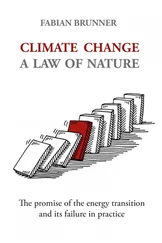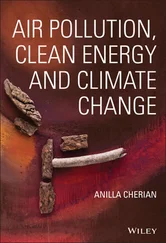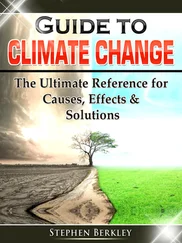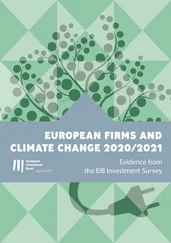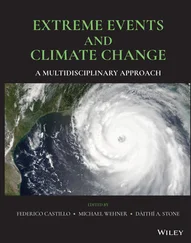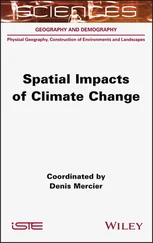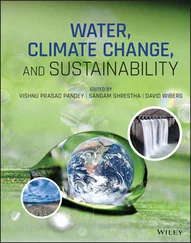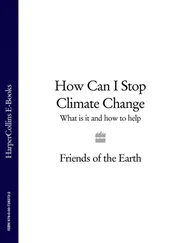Part 1
Understanding Climate Change
IN THIS PART …
Explore the science behind the climate emergency: what are the causes, what are the effects, what can humans do about it?
Understand what greenhouse gases are, why they’re vital for life on Earth, and how they’re heating up the atmosphere.
Investigate why scientists are certain that greenhouse gases are the cause of the global warming that the Earth is experiencing today.
Look at some of the other factors contributing to climate change.
Chapter 1
Covering the Basics of Climate Change
IN THIS CHAPTER
 Getting to know what global warming is all about
Getting to know what global warming is all about
 Figuring out what started climate change in the first place
Figuring out what started climate change in the first place
 Investigating the changes global warming might bring
Investigating the changes global warming might bring
 Examining the role governments can play in fighting global warming
Examining the role governments can play in fighting global warming
 Finding solutions to the problem
Finding solutions to the problem
The phrase “global warming” has been in the news since the late 1980s, but climate change, as global warming is also known, has been around much longer. In fact, it has been a constant throughout history. Earth’s climate today is very different from what it was 2 million years ago, let alone 10,000 years ago. Since the beginnings of the most primitive life forms, this planet has seen many different climates, from the hot, dry Jurassic period of the dinosaurs to the bleak, frozen landscapes of the ice ages.
Today, however, the planet is experiencing something new: Its climate is experiencing rapid and dangerous changes. Scientists are certain that these changes have been caused by emissions produced by human activities. By examining previous changes in the Earth’s climate, using computer models, and measuring current changes in atmospheric chemistry, they can estimate what global warming might mean for the planet, and their projections are scary.
Fortunately, Earth isn’t locked into the worst-case-scenario fate yet. By banding together, people can put the brakes on global warming. In 2009, when this book was first released, we had more time to apply the brakes than now. This chapter explains the essentials of global warming and what everyone can do to achieve a greener future.
Getting a Basic Overview — Global Warming 101
When “global warming” became a household phrase, greenhouse gases (GHGs) , which trap heat in the Earth’s atmosphere, got a bad reputation. After all, those gases are to blame for heating up the planet. But, as we discuss in Chapter 2, GHGs in reasonable quantities aren’t villains, they’re heroes. They capture the sun’s warmth and keep it around so that life as it’s known is possible on Earth. The problem starts when the atmosphere contains too great an amount of GHGs. (In Chapter 3, we look at how scientists have determined the correlation between carbon dioxide in the atmosphere and temperature.)
Other factors, which we discuss briefly in the following sections, affect the Earth’s climate. Some are short-term — mostly those are seen as variations in weather, like El Niño or El Niña. The ones that matter most, though, are those that have long-term effects on climate. When the overall temperature of the Earth and the oceans rise, that’s not just a change in the weather. And it’s not just a normal variation that might have been observed in the past. That’s a change in the Earth’s climate.
Heating things up with GHGs
Human activities — primarily, the burning of fossil fuels (which we look at in the section “ Tapping the Roots of Global Warming,” later in this chapter) — have resulted in growing concentrations of carbon dioxide and other GHGs in the atmosphere. As we explain in Chapter 2, these increasing quantities of GHGs are retaining more and more of the sun’s heat. The heat trapped by the carbon dioxide blanket is raising temperatures all over the world — hence, global warming.
Since the beginning of the Industrial Revolution, Earth has seen a 1.4-degree Fahrenheit (1.1 degree Celsius) increase in global average temperature because of increased GHGs in the atmosphere. Temperatures in polar regions, such as the Arctic, are experiencing temperature rises that are three times the global average.
Investigating other causes of global warming
Global warming is a very complex issue that you can’t totally understand without looking at the ifs, ands, or buts. Scientists have been certain for decades that the rapid changes to climate systems are due to the buildup of GHGs. With every new scientific report, they’re more certain and more concerned that changes must be made to avoid the worst-case scenarios. Other elements play a role in shaping the planet’s climate, however, including the following:
Cloud cover: Clouds are connected to humidity, temperature, and rainfall. When temperatures change, so does the cloud cover — and vice versa.
Long-term climate trends: The Earth has a history of going in and out of ice ages and warm periods. Scientific records of carbon dioxide levels in the atmosphere go back 800,000 years, but people can only give educated guesses about the climate earlier than that.
Solar cycles: The sun goes through a cycle that brings it closer to or farther away from the Earth. This cycle ultimately affects the temperature of this planet and thus the climate. However, scientists have eliminated solar cycles as a factor in current warming.
We go over these other issues in greater detail in Chapter 3.
CLIMATE CHANGE — THE STORY IN A NUTSHELL
Earth has been around for about 5 billion years, starting as a ball of swirling gas and dust left over from the formation of the sun. In the first part of this very long time, the iron and silica that make up most of the planet separated — the hot heavy iron went down to the core and the lighter silicates came to the surface and cooled. Volcanoes belched material and gases up to the surface. Continents formed and move around on the surface of the planet. The Earth froze from pole to pole, heated, thawed, froze again. The mix of gases in the atmosphere changed as volcanoes and sun had their effects.
An overview of life on Earth
Life began and then ebbs and flows ensued:
3½ billion years ago: Single-celled organisms and viruses appeared.
2½ billion years ago: Photosynthesis began in bacteria; sunlight provided the energy to convert carbon to cellular growth and emit oxygen as waste.
900 million years ago: The first multi-celled organisms appeared.
450 to 600 million years ago: Life exploded, and plants and animals from the oceans began to colonize the land.
250 million years ago: The first mass extinction happens — the survivors are the early dinosaurs and mammals.
200 million years ago: Another mass extinction occurs — now the dinosaurs become dominant. At the same time, some little mammals become warm-blooded, with new abilities to live in varying climates.
150 to 100 million years ago: The first birds and flowering plants appear; large dinosaurs coexist with four distinct groups of mammals.
Читать дальше
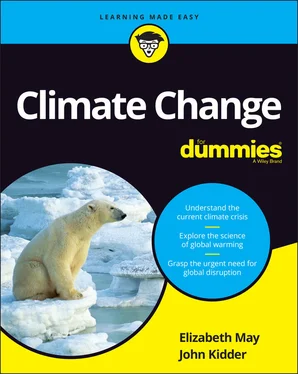
 Getting to know what global warming is all about
Getting to know what global warming is all about